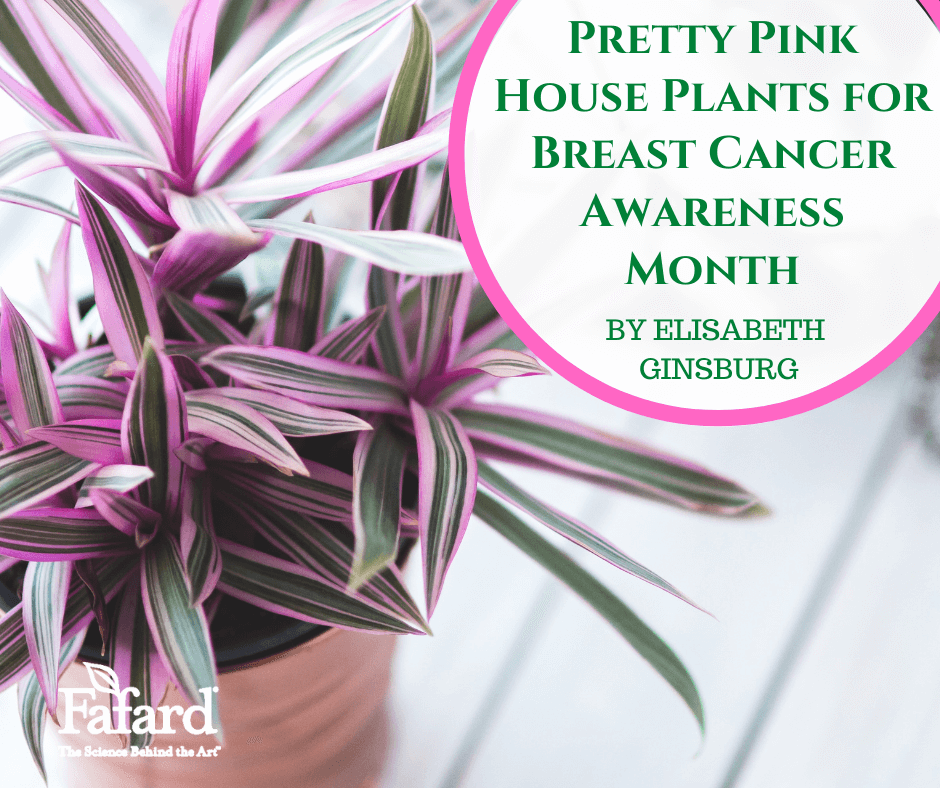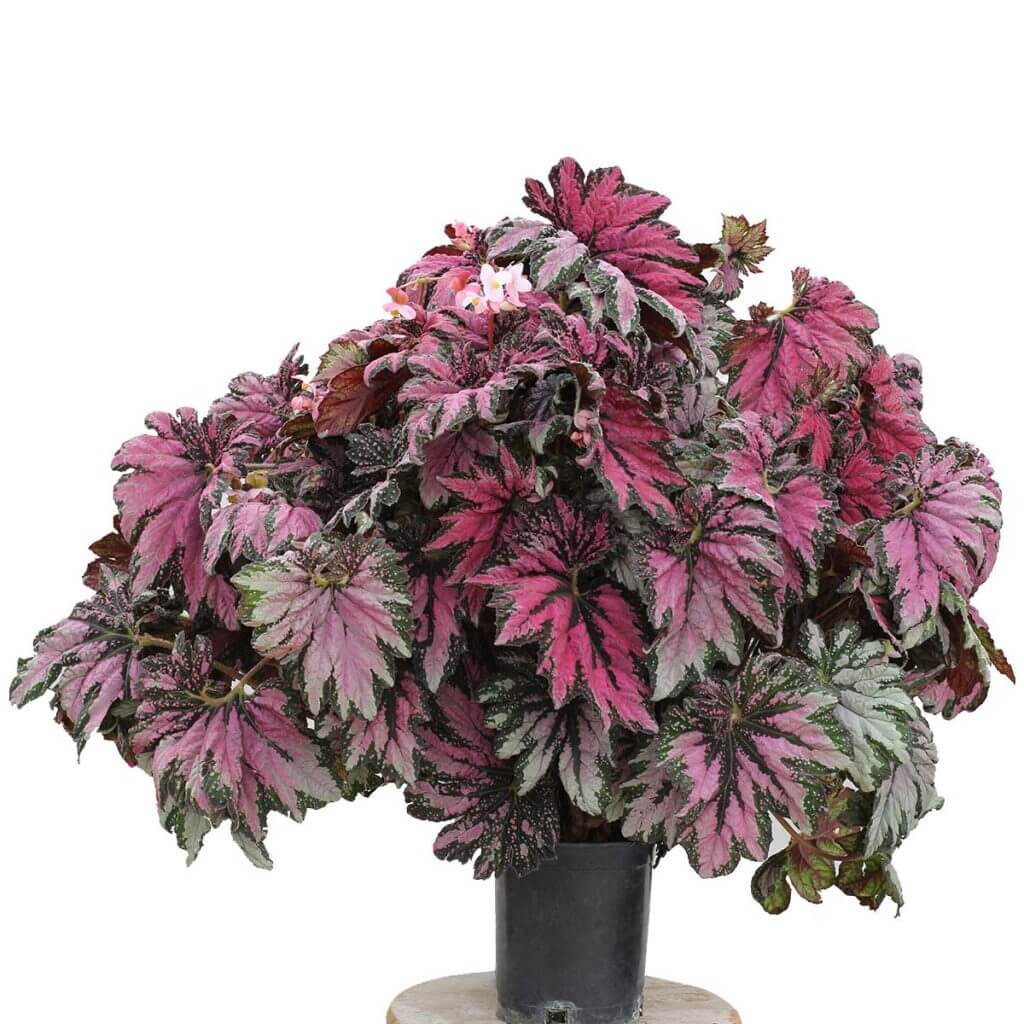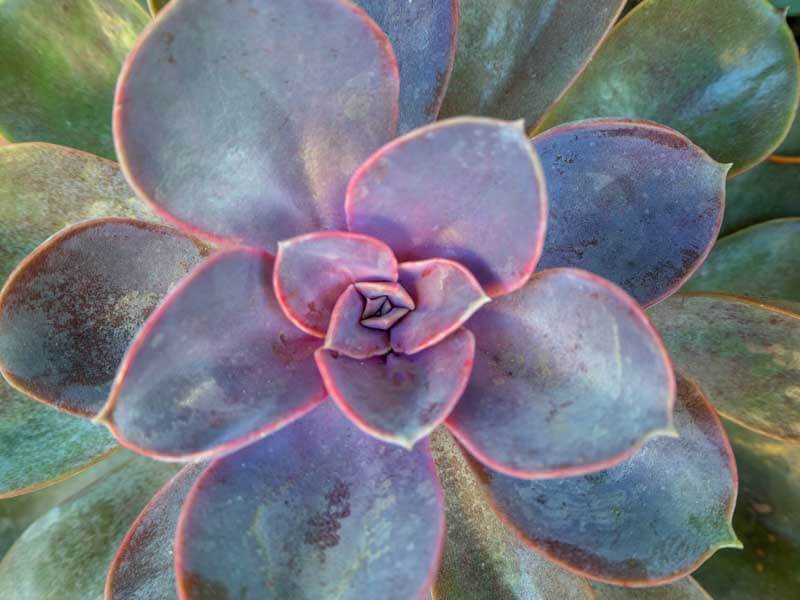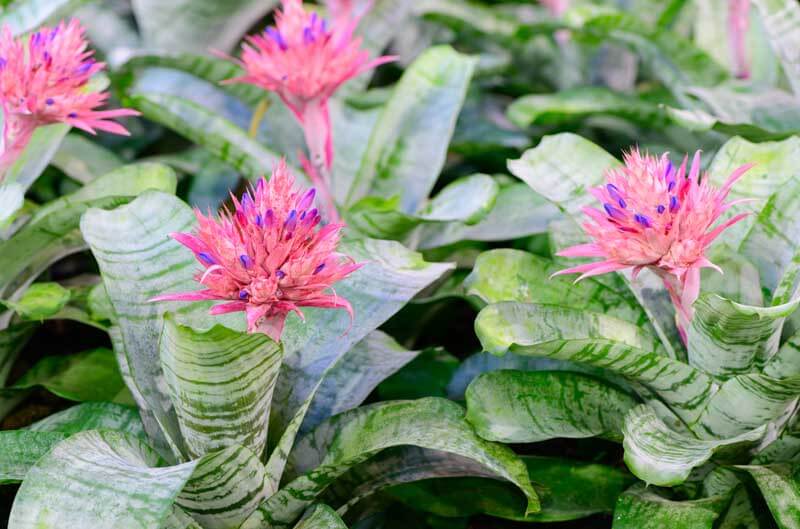
The color pink represents warmth and hope, like the rosy pink clouds of a summer sunset. It is also the color chosen to symbolize breast cancer research, awareness, and support. Some gardeners may be planting Pink Ribbon spring bulbs or Pink Invincibelle III hydrangeas to commemorate October, National Breast Cancer Awareness Month. But it is the time for indoor gardening, so planting or sharing pretty pink house plants is another way to recognize friends and loved ones that have survived or passed from breast cancer.
If gifting one or more of these beautiful house plants, it is also nice to make a donation to the Breast Cancer Research Foundation, the highest-rated charity dedicated to finding a cure for breast cancer.
Pink-Stripe Spiderwort
One of the easiest plants that you can grow indoors is Pink Stripe spiderwort (Tradescantia spathacea ‘Tricolor’). It’s a popular plant to find at local greenhouses and even big-box stores and it grows well in pots or hanging baskets. The Mexican native is colorful, drought-tolerant, sun-loving, and grows beautifully indoors and out. The leaves are green striped with pink variegation. They grow best with bright indoor light and lightly moist soil with good drainage. Purplish flowers appear throughout the year, but the leaves are the real attraction.
Pink Rex Begonias

Rex begonias (Begonia rex-cultorum) are longtime house or parlor-plant favorites grown for their colorful, flashy foliage. They combine an array of interesting colors and textures, featuring long, pointed, or rounded leaves that may be ruffled or curled in a way that resembles a snail shell. The leaves are often marked with two or more colors, which can include light or dark pink, depending on the variety.
Those in Terra Nova’s high-performing T REX™ Series have pleasing splashes of rose and pink. The silvery-pink-leaved ‘Andrea’ and the pink-and-green leaved ‘Regal Minuet’ are two more exceptional commercially available varieties with pink in the color mix. Though flowers are not the main attraction of Rex begonias, the blooms may be pink as well.
Provide high humidity, a free-draining soil mix, like Fafard Ultra Container Mix with Extended Feed, and bright indirect light for the best results. Since begonias dislike wet feet, allow the soil to become somewhat dry between watering.
Pink Nerve Plant

Mosaic or nerve plant (Fittonia albivensis) features oval green leaves accented with a network of rose-pink veins. The miniature ‘Autumn Flame‘ is a particularly pretty form with pink and reddish venation. It reaches a few inches but spreads further. Standard forms reach 6 x 12 inches.
Though nerve plant hails from the tropics, direct sunlight will burn the leaves, so place it in a spot with bright, indirect light. Choose well-drained soil and place containers on beds of pebbles in water-filled saucers or trays to help raise humidity levels. Mist regularly in winter and feed in spring and summer with a balanced fertilizer, applied according to package directions. Another option for small Fittonia plants is to grow them in terrariums, which provide more consistent humidity.
Rose-Painted Calathea

Rose-painted Calathea (Calathea roseopicta) lives up to its name, with fabulous eye-catching foliage painted with rose. One variety, ‘Rosy‘, features large, oval leaves with rose-pink and ivory centers edged in dark green and reaches just 8-inches high with a broader spread. The leaf undersides are pure pink, which is especially evident when the plant furls its leaves together at the end of the day.
On average, rose-painted Calathea is a medium-tall, upright plant that grows 2 to 3 feet high with a 1-foot spread. It is perfect for a warm corner with bright, indirect sunlight. High humidity is a must, so consider a pebble tray or spritz for this plant as well. Allow its soil to become slightly dry between watering. Growth slows down in the winter, so hold off feeding until spring, when active growth restarts.
Pink Echeveria

Many of the most popular succulents also feature pink-tinted or accented leaves. Among the prettiest are the rosette-forming echeverias (Echeveria spp.). Two excellent choices are ‘Perle von Nürnberg’ (‘Pearl of Nüremberg’), which has plump gray leaves accented in pink, and the comparable ‘Rainbow’, with its striped variegated leaves of pink, yellow, and green.
If you often forget to water houseplants, succulents like echeveria are a perfect fit. Plant them in Fafard® Professional Potting Mix leavened with a 1/3 amount of perlite or fine gravel so that water drains freely. Water infrequently and only when the soil is dry. In winter, water monthly.
Silver Urn Plant

The silver vase or urn plant (Aechmea fasciata) is a bromeliad with dramatic pink, petal-like leaves (bracts) that resemble flowers and surround the much smaller, electric-purple true blooms. The plants have no stems, but stand erect (up to 3 x 2 feet) because the sturdy, strap-like leaves grow upward into an urn shape with a hollow central cup. Those leaves may also be variegated with streaks of silver. Unlike other house plants, bromeliads are watered by filling the central cup whenever it is empty. Reduce the amount of water in the winter but be sure to mist plants regularly to keep leaf edges from browning.
Silver vase plants perform best in bright indirect light. Each plant blooms only once, but the pink bracts may last a month and a half or more. Once the blooms fade, the parent plant dies, but a healthy plant will produce offshoots or “pups” from the side of the parent plant, which can be transplanted when they reach 6 inches tall, ensuring another generation of silver vases filled with bright pink flowers.
